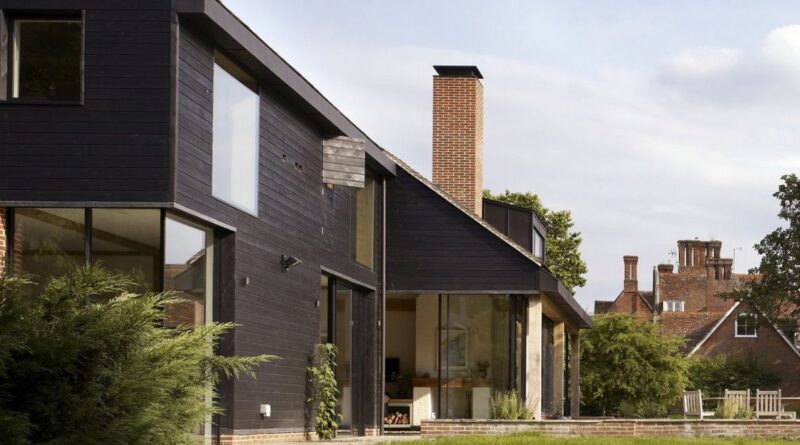A Guide To Using Shou Sugi Ban Cladding
If you have an interest in design, you have probably thought about the origin of the practise of using charred or burnt wood as vertical cladding at some point. The outer bark of Japanese cedar, also known as Japanese red cedar, has a long history of being burnt off by traditional artisans, and this practise continues today.
If you have ever tried to reignite a campfire using charred logs, you probably have some idea of how burning the outside face of the wood may make it much more susceptible to termites and fire, as well as extending the life of the coating by roughly 80 years beyond what it would have done otherwise.
Continue reading to learn more about shou sugi ban cladding, an application of Japanese architecture.
How Did Shou Sugi Ban Timber Become Popular?
The appeal of the shou sugi ban cladding may be compared to that of industrial lighting with exposed bulbs or reclaimed wood; both have an organic, rustic air about them. It is possible that the rise in popularity of this style over the past decade can be attributed to the fact that it embraces concepts that have been fundamental to Japanese architecture for a very long time, such as modernist architecture, minimalism, the use of natural materials, and attention to the environment in which the structure is placed.
Shou sugi ban cladding rose to popularity over the years because of the longevity it offers. It can withstand changing weather conditions for over 80 years. With the proper materials, installation, and maintenance, it can serve its purpose of aesthetically and functionally housing one.
Japanese architecture is well-known for its minimalist culture, which has spread all over the world for the past few years because of the different methodologies and effects of a minimal lifestyle on mental health.
Comparing Originals vs. Trends
When it comes to replicating designs from the classics, there may be controversial views. As years, if not hundreds, make up the perfecting of architecture, there may be a silver lining between depicting originals and trends.
Many design fads, like terrible photocopies, lose the originality of their idea when they are duplicated over and over again. Nowadays, materials like aluminium and fibre cement cladding are used to try to mimic the shou sugi ban style. The traditional feature resembled ship lap cladding in that it was sealed with a thinner piece of wood.
Is Shou Sugi Ban Timber Effective?
Shou Sugi Ban cladding is naturally resistant to the damage caused by insects and dampness and requires very little maintenance to remain in good condition. The benefits of using Shou Sugi Ban become more and more apparent when applied to modified wood boards since they are already denser, more durable, and more long-lasting than many other types and species of wood.
Shou Sugi Ban timber and burnt Siberian larch are central aspects of soft, porous, and innately durable woods that work well with this process. Both of these types of wood have been treated using the Shou Sugi Ban technique. These less dense materials have a molecular structure that makes it possible for char to form on their surface, which increases their resistance to fire and makes them easier to work with.
Before settling on Shou Sugi Ban, it is important to consider the building’s location within the site’s solar context and any overshadowing components, flora, climate, and localised winds. Therefore, the shou sugi ban should be carefully examined in hot, dry locations to prevent heat difficulties for the residents.
Is Shou Sugi Ban Timber Hard to Maintain?
Shou Sugi Ban timber requires minimal maintenance. In fact, each and every wood that is exposed to certain elements will deteriorate over time if it is not properly maintained. Charred wood, also called Shou Sugi Ban, does indeed have a longer life without the need for maintenance compared to other forms of wood.
The maintenance process of re-oiling burnt wood is a crucial step to take. The amount of time between applications of an oil coating should vary greatly depending on the species.
To preserve the wood’s structural and aesthetic integrity, a new oil application must be applied every two to four years at the recommended intervals. Ask a local timber contractor for the needed application or have it treated by a professional every few years to ensure the longevity of the cladding. When not properly maintained, no high-quality timber lasts a long time as a shelter.
Conclusion
Using Shou Sugi Ban requires in-depth and thorough research beforehand. Certain Japanese architecture has complex takes on infrastructures, and when modern applications take place, learning how to maintain and treat timber is crucial. Shou Sugi Ban brings a unique minimalism style that enhances the aesthetic of an infrastructure. Furthermore, it can increase longevity by using classic techniques. Shou Shou Ban is capable of producing a remarkable look, yet it may come with certain drawbacks.




